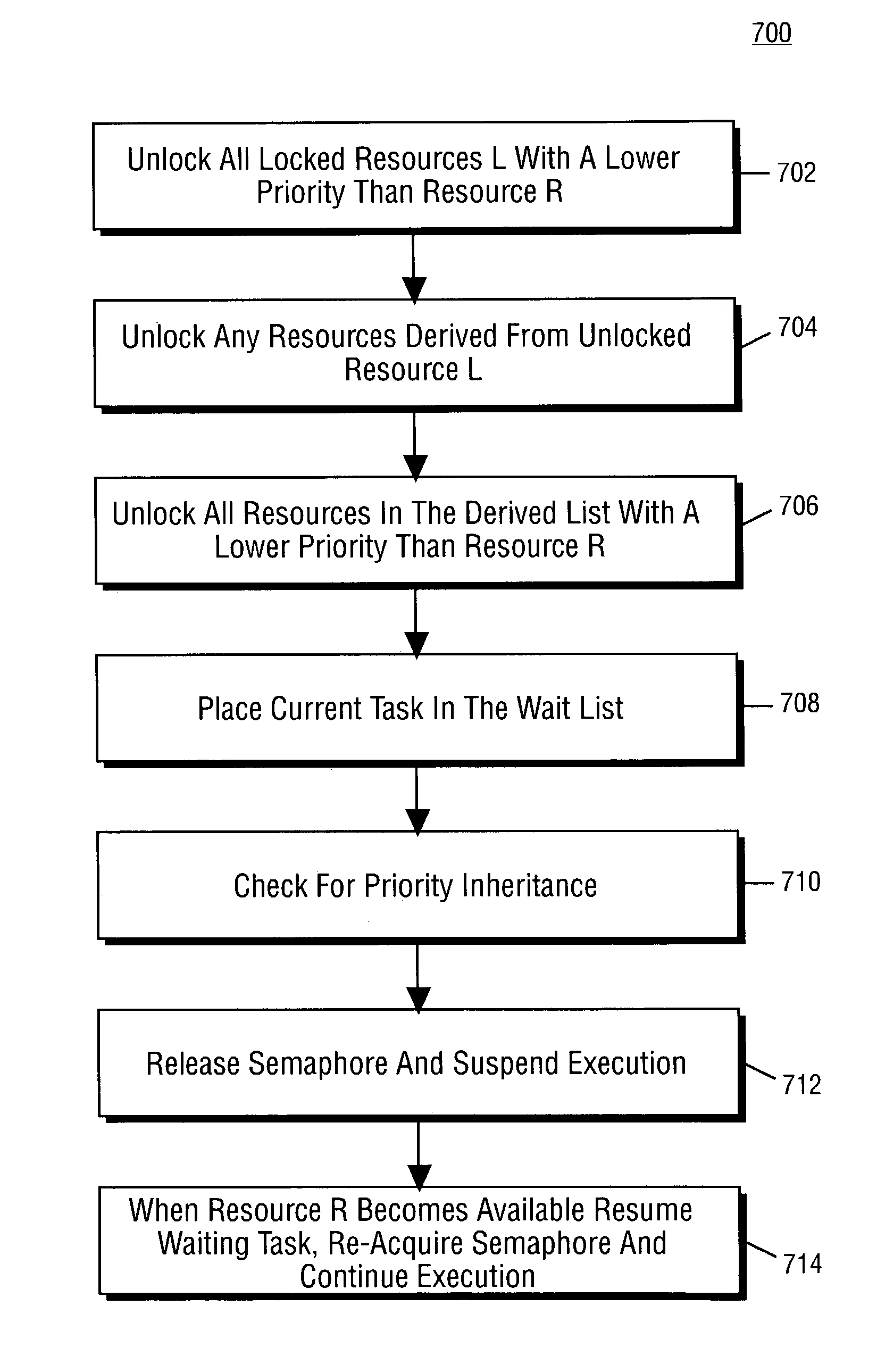Mutual exclusion at the record level with priority inheritance for embedded systems using one semaphore
a technology of embedded systems and record levels, applied in the field of computer software, can solve problems such as application program or system software to crash, data corruption and/or race conditions are often unacceptably high, and impose significant processing overhead
- Summary
- Abstract
- Description
- Claims
- Application Information
AI Technical Summary
Benefits of technology
Problems solved by technology
Method used
Image
Examples
Embodiment Construction
[0024]A system is described that provides mutual exclusion of multiple tasks at the record level with priority inheritance and using one semaphore.
[0025]FIG. 1 is a block diagram of a representative computer system that is used to implement the mutual exclusion mechanism of an embodiment of the present invention. The computer system 100 includes a processor 102 coupled through a bus 101 to a random access memory (RAM) 104, a read only memory (ROM) 106, and a mass storage device 107. Mass storage device 107 is typically implemented as a disk or tape drive for storing data and instructions. A display device 121 for providing visual output is also coupled to processor 102 through bus 101. Keyboard 122 is coupled to bus 101 for communicating information and command selections from the user to processor 102. Another type of user input device is cursor control unit 123, which may be a device such as a mouse or trackball, for communicating direction commands that control cursor movement on...
PUM
 Login to View More
Login to View More Abstract
Description
Claims
Application Information
 Login to View More
Login to View More - R&D
- Intellectual Property
- Life Sciences
- Materials
- Tech Scout
- Unparalleled Data Quality
- Higher Quality Content
- 60% Fewer Hallucinations
Browse by: Latest US Patents, China's latest patents, Technical Efficacy Thesaurus, Application Domain, Technology Topic, Popular Technical Reports.
© 2025 PatSnap. All rights reserved.Legal|Privacy policy|Modern Slavery Act Transparency Statement|Sitemap|About US| Contact US: help@patsnap.com



